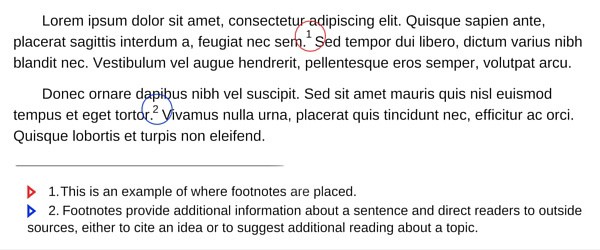Citing Images

Readers need to understand the images you include in your paper to illustrate you points, especially where the images came from. Art historians usually label their illustrations sequentially (Figure 1, Figure 2, Figure 3...) and then in the caption for each image, they provide information about the work illustrated itself, and about the original source of the image (where/by who the image was created and published). Here is an example for an image of a Playbill theatre program:

Figure 1: "Legally Blonde the Musical" Playbill program, 2007. Commercially printed on paper, 4"x6". Image from playbill.com
And here is an example of a caption for an image of one of your works:
Figure 2: Artist's Name, Title of Your Work, date. [information about medium and size]. Image provided by the author.
For information about what to include in your captions for images of works of visual art, I also like this guide from Colgate University:
Writing about other artists / others' work
For those new to art history (and for general inspiration for everyone) discipline-specific guides to art research and writing about art can be very useful:
Writing about Art by
Marjorie Munsterberg's wonderful guide is freely available online and comes highly recommended by academic art history departments, including UK's. Geared toward undergraduate students, this work explains in very clear detail exactly how to research and write an art history term paper.A Short Guide to Writing about Art by
Call Number: Fine Arts Library N 7476 .B37One of the field's classic texts on writing about art. First published in the early 1980s with many later editions, Barnet is still an excellent guide.
Citing Your Sources
Writing a research paper means documenting, or "citing," the sources of the information you use. How do you cite your sources? Every time you quote from or mention another person's writing or research in your own paper, you also mention the source of that work in a "footnote" or in little aside called an "annotation." At the end of your paper, you include a list called a bibliography of all the sources you used throughout.
There are many different ways to annotate, footnote, or call out sources in your paper, and many different ways to format the bibliography. These are called citation styles, and the professor who assigns a paper (or the publisher of a paper if it is being written for publication) tells writers which style they should use for any particular paper. In art history classes and other humanities classes at UK, the preferred style is usually that of The Chicago Manual of Style.
Footnotes (happening inside the paper itself, "right-time-at-the-right-place")

Bibliography (an alphabetical list at the end showing every source you mentioned in the paper's footnotes)

The Chicago Manual of Style
- Chicago Manual of Style : Citation Quick GuideClick here for the quick examples showing how to format footnotes and bibliography entries for books, newspapers, journal articles!
Online access to the full text of The Chicago Manual of Style, 17th edition. (UK subscription limited to 25 simultaneous users.)
To see a print copy of the manual in the library:
The Chicago Manual of Style, 17th Edition
Call Number: Fine Arts Library Reference section Z253 .U69 2017This style manual frequently used in the humanities describes recommended nuances of grammar and writing style and shows the preferred formats for footnotes and bibliography entries.
Writing an Artist's Statement
Mapping the Intelligence of Artistic Work by
Call Number: Fine Arts Library Book Stacks - N 71 .W47 2011Filled with writing exercises for artists at all stages of articulating their work, by faculty members at RISD (Rhode Island School of Design).
- Here are some questions offered at theartleague.org to help artists think when writing about their own work:
- What keeps you coming back to the studio, day after day?
- What’s the best way someone has responded to your artwork (comment in a guest book, at an exhibit, etc.)
- What questions are you asked most frequently about your work?
- What’s your artist story? (as opposed to your biography and CV)
- Who is your art for?
Criticizing Art by
Call Number: Fine Arts Library Book Stacks - N 7476 .B38 2000This book about contemporary art criticism also contains information about writing an artist's statement.
The Writing Center
The Robert E. Hemenway Writing Center at the the University of Kentucky offers free and friendly help to all UK students, faculty, and staff. Graduate student consultants and undergraduate consultants assist with the process of composing and communicating in writing, speaking, and multimedia projects across the curriculum, at every stage of the composing and communicating process.
The Writing Center is located in the W. T. Young Library Hub in room B108B.


